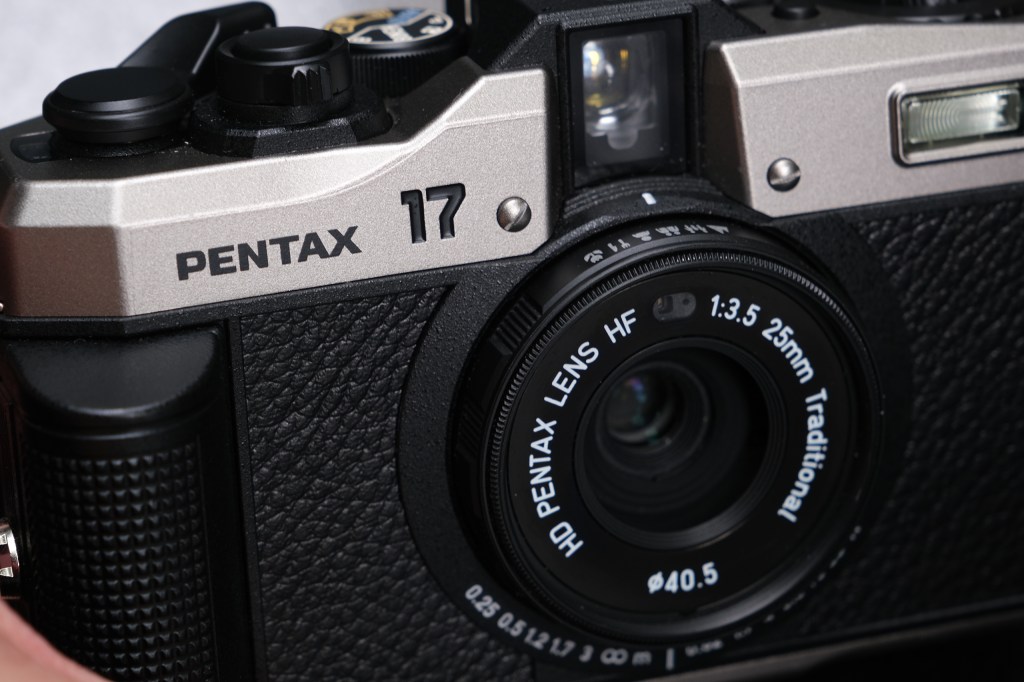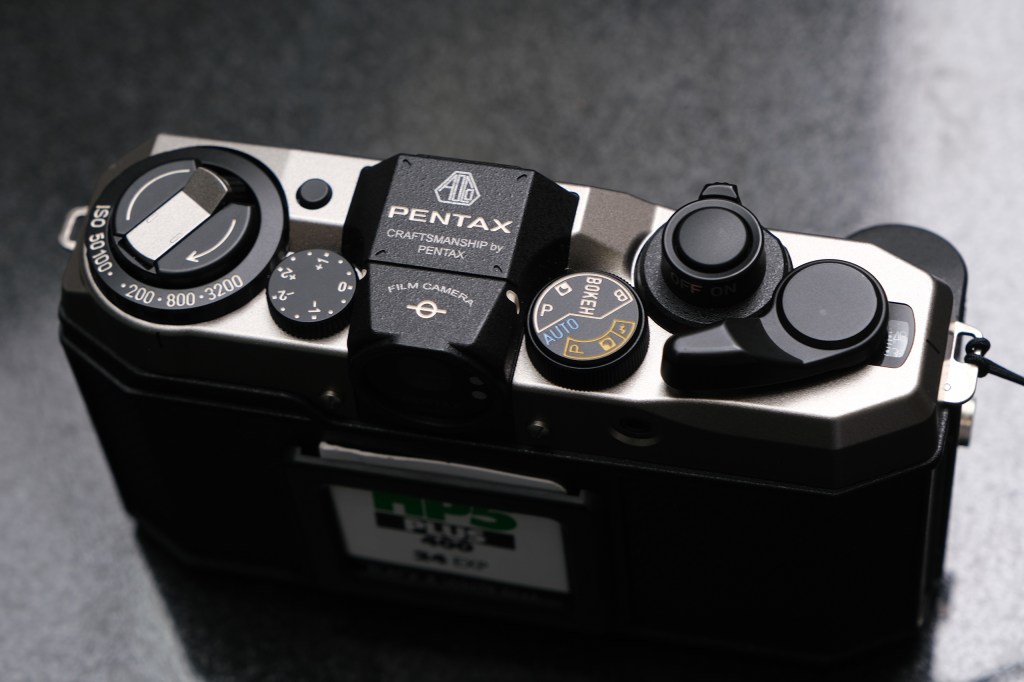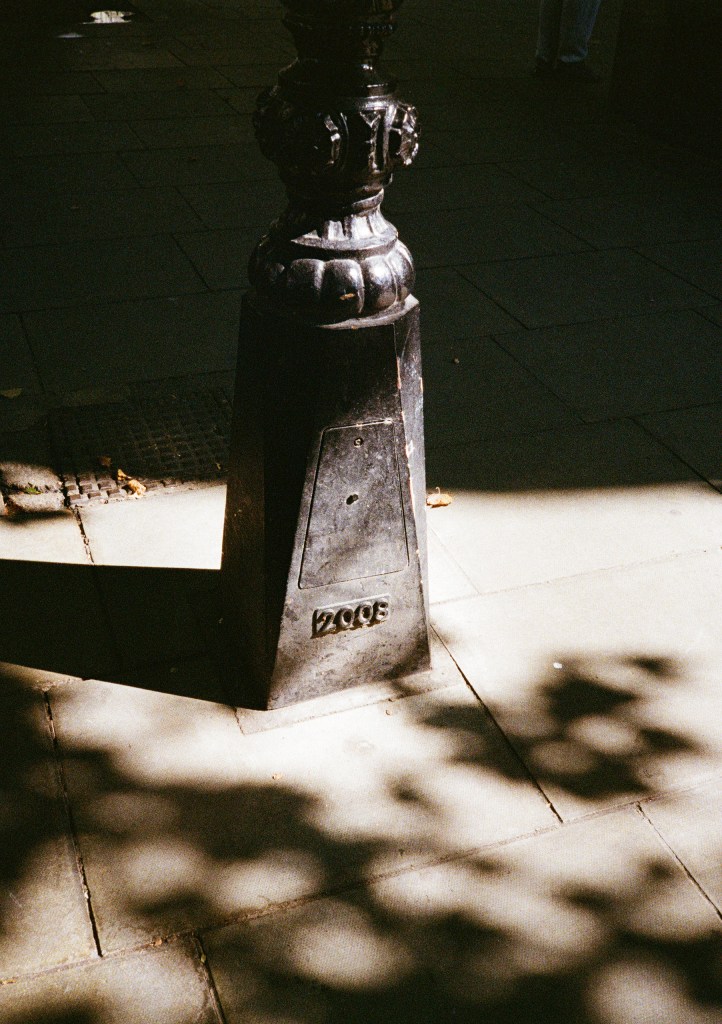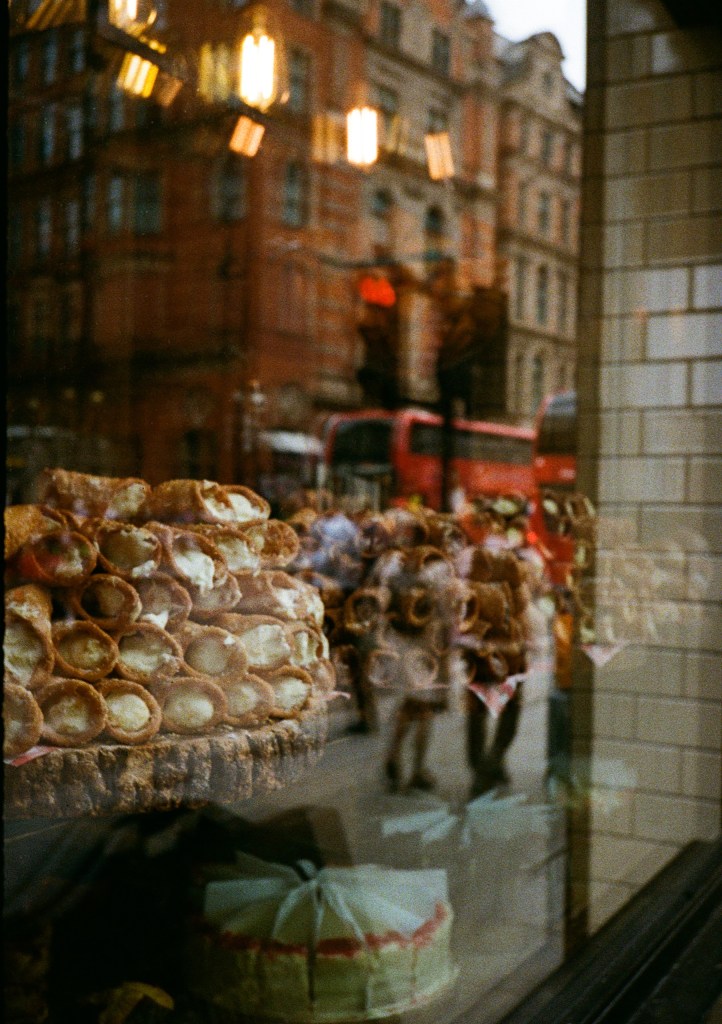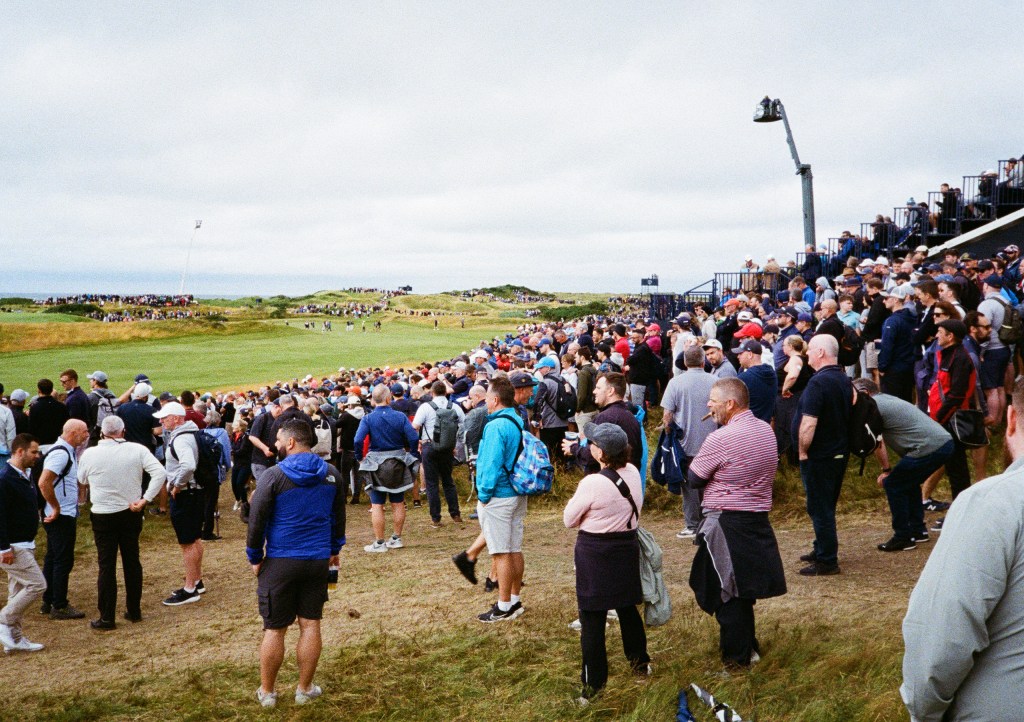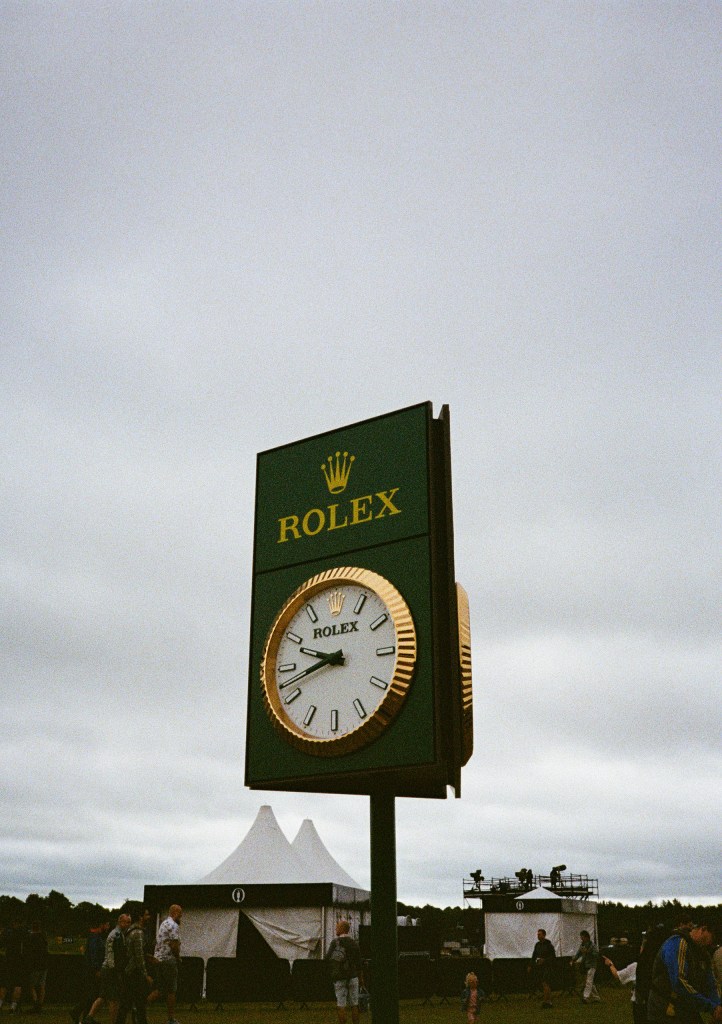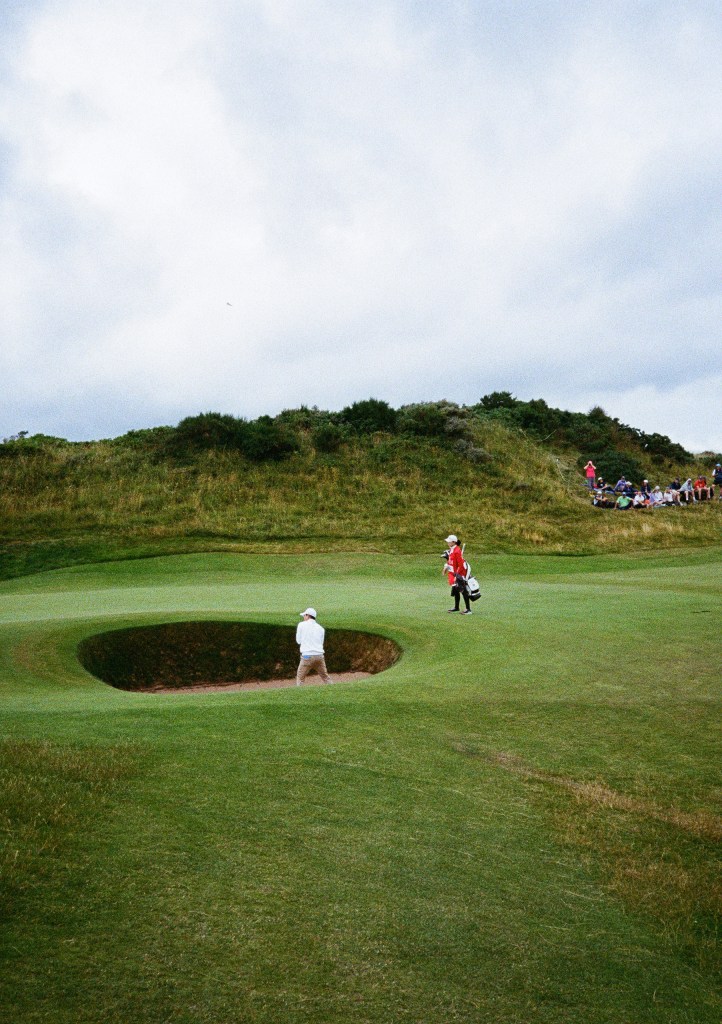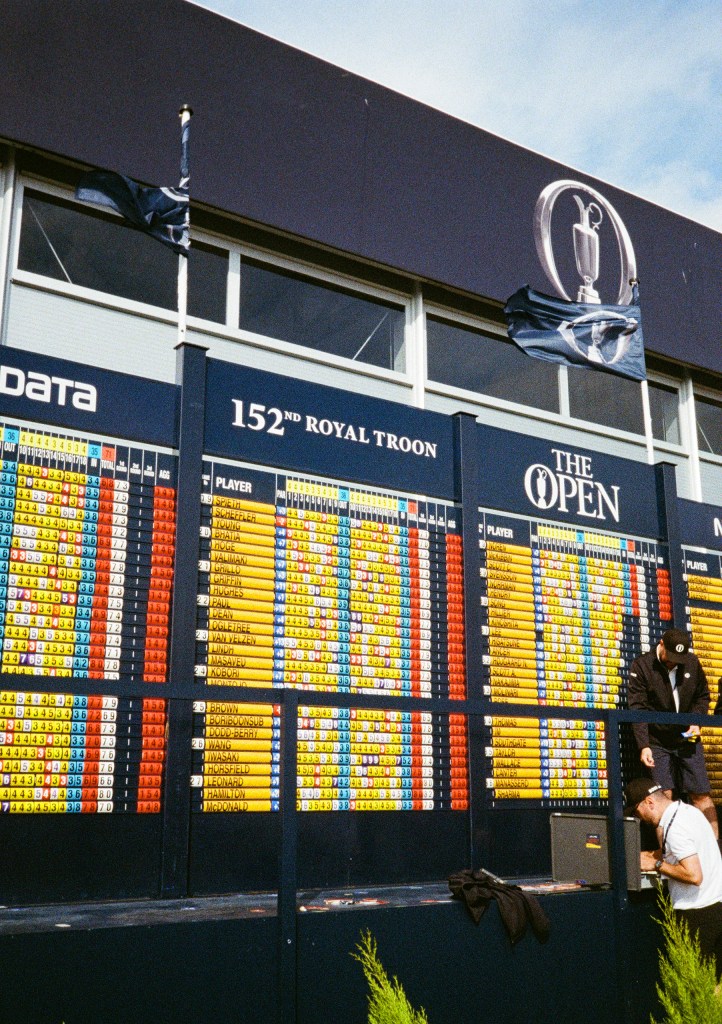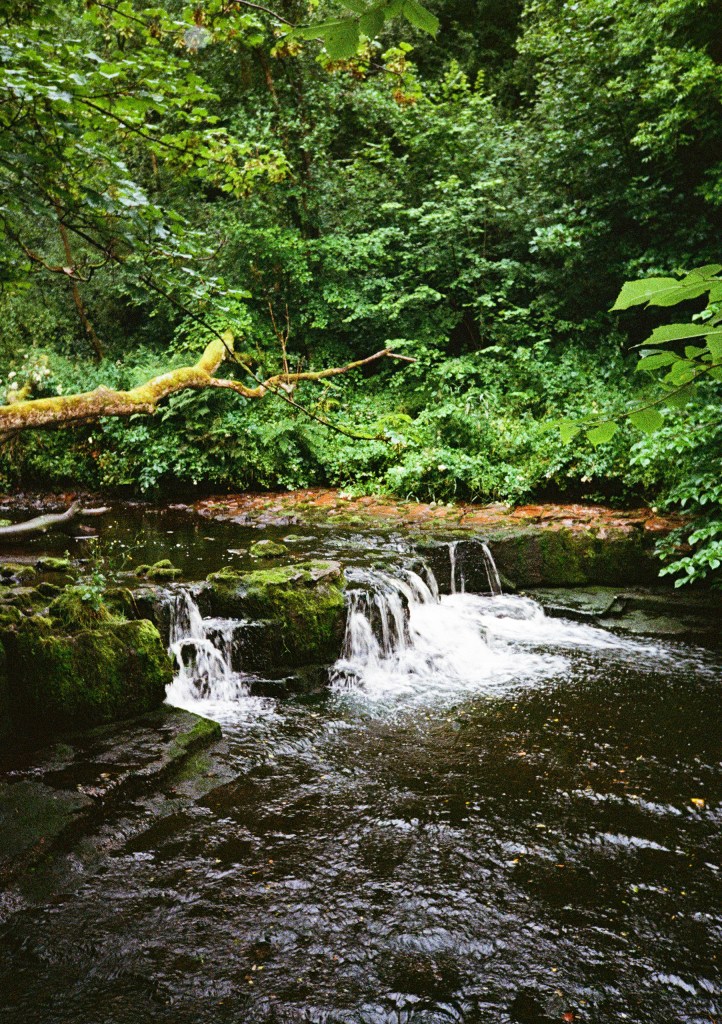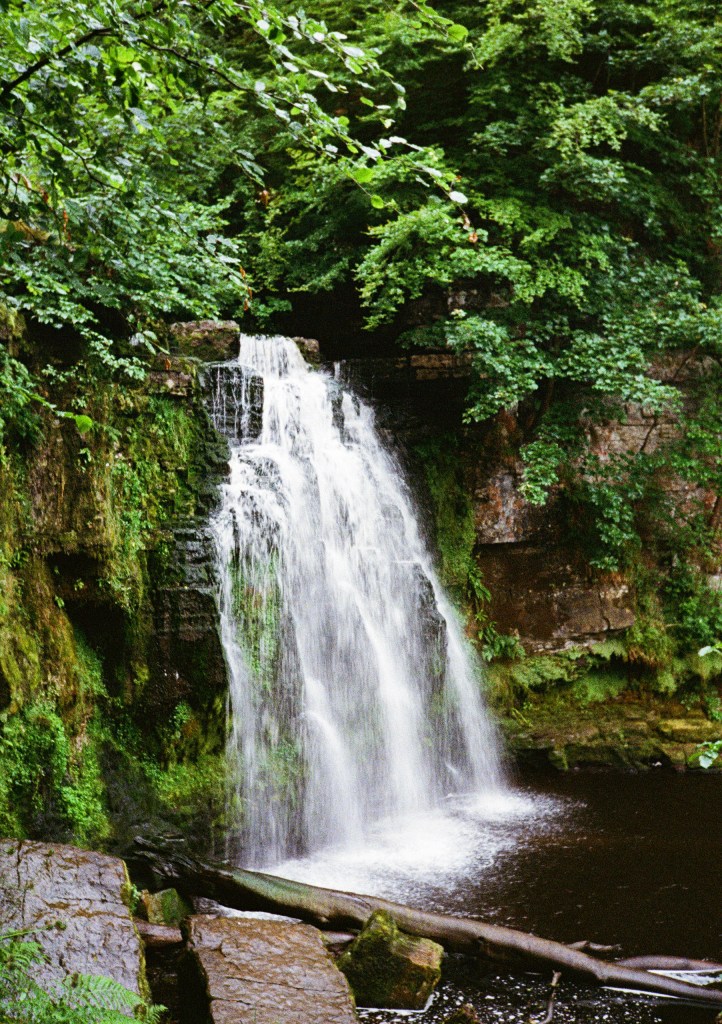Amateur Photographer verdict
Easy to use, lightweight, and consistent. If you want a good camera that is a step up from a basic point-and-shoot, this is a great option. If you can stomach the price.- Lightweight
- Easy to use
- Half-frame – get more out of your film
- Expensive
- Plastic feel and toy-like
- Zone focus isn’t always reliable
Launched in June 2024, the Pentax 17 was the first new 35mm film camera released by Pentax in almost two decades. It is also their first half-frame concept with inspired and redesigned elements from previous cameras in their lines, like the lens from the PENTAX Espio Mini. It brings a modern twist to traditional design, with a clear aim to target the younger, trendy social media audience that craves the analogue nostalgia of film photography. It retains its initial price of $500 / £500
Now a half-frame camera would surely fit the mould for those entering the film photography world; as most of them shoot in vertical format on their smartphones and for social media, the transition appears more natural. But another big selling point for creating a half-frame camera is that you are effectively doubling the photos taken per roll. On a standard 36-exposure roll, you will take 72 images. With two exposures per frame, the cost of film is stretched further.
At a glance
- Half-frame 35mm film camera
- Fixed focal length, 25mm (37mm equivalent)
- F3.5 Max aperture
- ISO 50 – ISO 3200
- Easy loading system
- Composition frame, Close-distance composition frame
- Zone focusing setting can be confirmed through the viewfinder
- Manual zone-focusing
- 6 focus zones including macro
- Programe AE Electronic shutter
- Shutter speed: 1/350 to 4 seconds, Bulb
- Built-in flash
- One 3V lithium battery
- Approx. 290g(without film and battery)
Features
The Pentax 17 has a HD PENTAX HF 25mm f/3.5 Traditional fixed prime lens (37mm in full frame), with six different focus zones from 0.25m for close-ups through to infinity ∞ for wider landscapes (0.25m, 0.5m, 1.2m, 1.7m, 3m, ∞). The zone-focus system is manual, so when using you need to set it based on the estimated distance of your subject. In full auto mode, the camera is fixed focus and Program modes activate the zone focus.
The body features a bright viewfinder, with composition lines for both wide and close-up shots, as well as a view of the focus zones on the lens, which are marked by small illustrations. It also includes an electronic shutter unit to enable automatic control over aperture and shutter speed. Photographers are able to manually set their ISO (50-3200) and select different shooting modes on a control dial. Half pressing the shutter release actions metering.
The mode dial is split into 2 sections. The white zone gives you Program mode where the camera will set the aperture and shutter speed for you, which is predominately what I used for this review. There is also a Bokeh setting which forces the camera to prioritise f/3.5, and Bulb mode where the shutter will stay open as long as you hold down the button or cable release, so is great for trying longer exposures. The yellow-coloured area has another program mode but forces the flash to fire automatically if necessary.
Beyond these manual tools, there is no self-timer, fancy features or options to get really creative. Whilst it’s not a key selling feature, you do have the ability to create double exposures, by tricking the camera into thinking you have wound on by holding in the rewind button at the same time as winding on the film advance lever then proceeding to take another photo as usual.
Design and Handling
Pentax have created a new camera that brings hints of traditional film camera design with some modern influences – bringing its own distinct look but still with great style.
The camera body is light, with the top and bottom plates made of magnesium-alloy, a dark grey finish and black accents. No other colours are currently available. On the top of the camera, there is an ISO dial with rewind knob, traditional film advance lever, exposure compensation dial, mode dial and on/off switch, shutter release button and a port for cable shutter release. On the bottom, a 1/4″-20 tripod mount and the film rewind button. The battery is inserted into the grip on the front, and there is also a nice note slot on the back. The ISO dial has a lock, and I think this could have been replicated also on the mode dial – on a few occasions I had either accidentally turned it, or it had managed to turn in my bag.
Despite being partially metal, the Pentax 17’s body could easily be mistaken as a fully plastic one. Instead of wrapping completely round to the back, the faux leather finish on the front uses three different black, plastic materials, along with the plastic controls on the top. These aesthetic qualities do not effect the camera’s capability of course, but are incongruous given its price; this feels and looks incoherent and cheap.
For 35mm film photography, I typically use my Pentax K1000 and half-frame Olympus Pen-EE-2. Whilst these are heavier, they look and feel more robust, premium quality and generally sophisticated. But the Pentax would certainly be a step up from the more affordable and basic examples of half-frame cameras, like the Kodak Ektar H35.
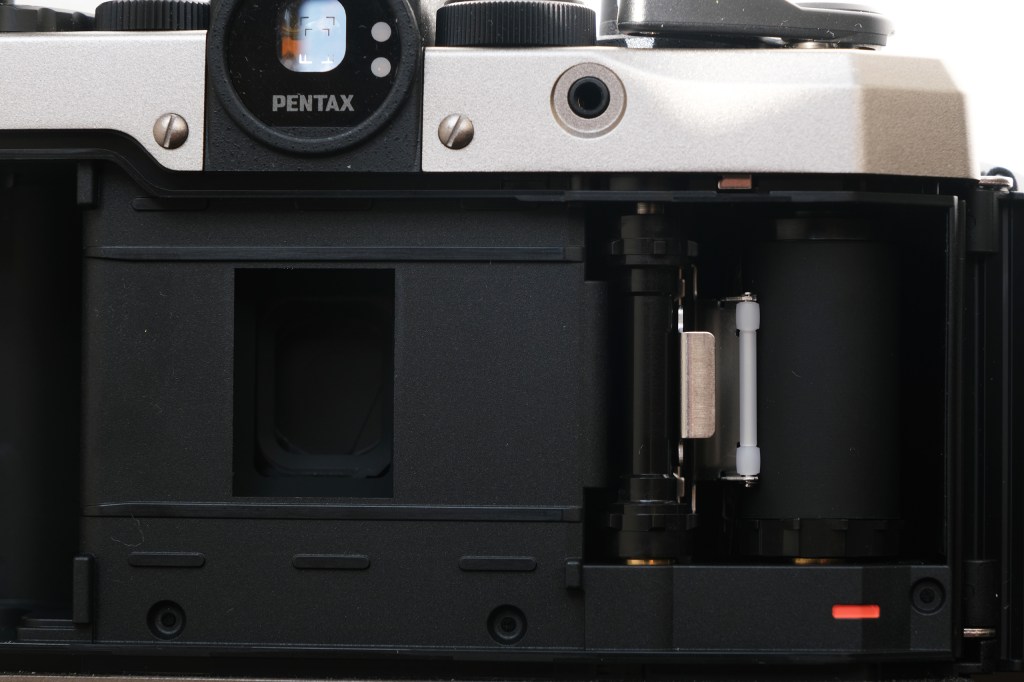
The Pentax 17 does have some tactile and hands-on manual controls that give a nod to the classic film cameras and experience, rather than being a full point-and-shoot. Loading, advancing and rewinding the film have all remained manual, which in a modern camera could have easily been automated. The mode dial allows you to select different programmed modes, though there aren’t many options to choose from. The exposure compensation dial allows you to adjust exposure compensation by +/-2 EV, which I mainly used in this case for double exposures.
Focusing is not completely automated either, the user is able to adjust their focus on the lens via the focus zones. The distance is marked on the camera in both metres and feet, which is handy.
The vertical viewfinder also contains framing and composition lines. As it is half-frame, vertical is instinctively the way to shoot but you can also take landscape photos by turning the camera on its side.
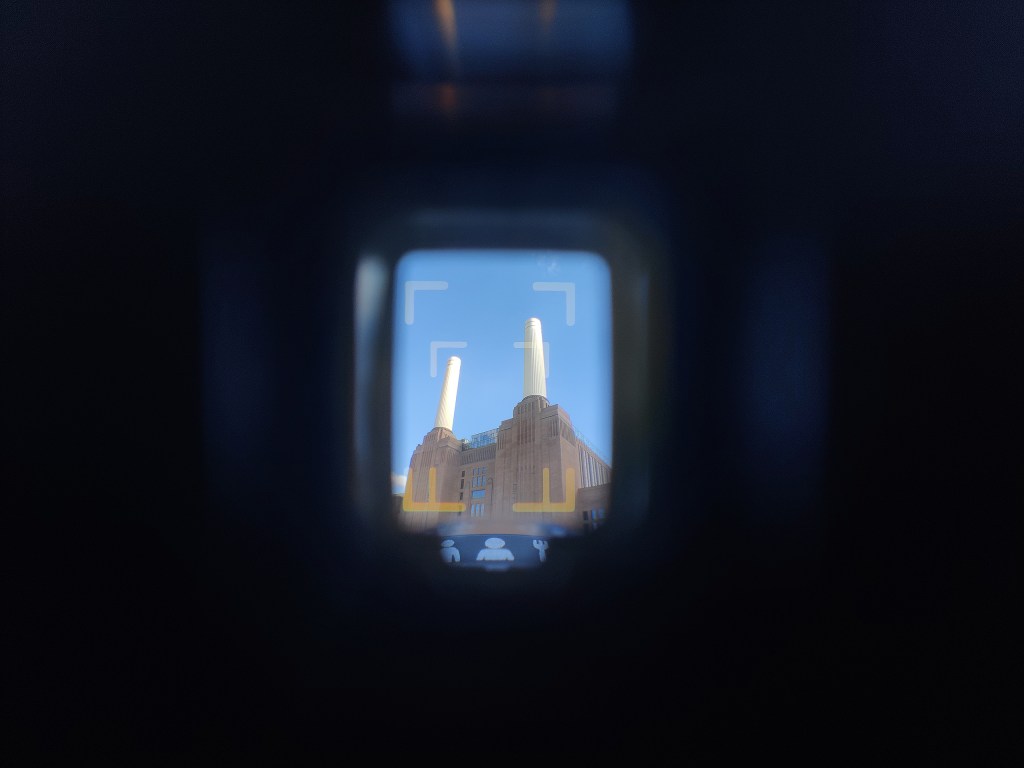
Next to the viewfinder are a couple of warning lights that flash orange and blue for a range of different situations e.g. flash readiness, when the cap was still on, the film hadn’t been wounded on, and insufficient lighting. But honestly, I would forget what flashing and colour meant what, the Start Guide that comes with the camera didn’t help with identifying these, but with the full manual and further use of the camera you soon get an idea.
The dials and film advance winder have a nice feel, synonymous with other analogue cameras. But I did have a fear about the easy loading system and the film not taking up properly, as when you load the film you are just loading to the marker rather than having to insert into a take-up spool. However, it was very easy and functioned well. The film was also easy enough to rewind, very smooth and not awkward.
The camera itself feels nice to use and hold, it is compact in size and easy to slot into a handbag. It is however larger (127 x 78 x 52 mm) than other half-frame cameras like the Olympus Pen EE-2.
Performance
The Pentax 17 has been very easy to use, leaving the camera in Program or Auto modes worked well on days I just wanted to use it as a point and shoot. The images produced have nice detail, especially in bright lighting conditions, and results were consistent when not met with human error.
In most cases, the images all have some level of grain, that you generally get with film, with more visible in the lower lit images – which some might like the look of. Of course, with all film photography, the type of film, development and scanning all play a part in image quality. The photos in this review were developed and scanned by Analogue Wonderland.
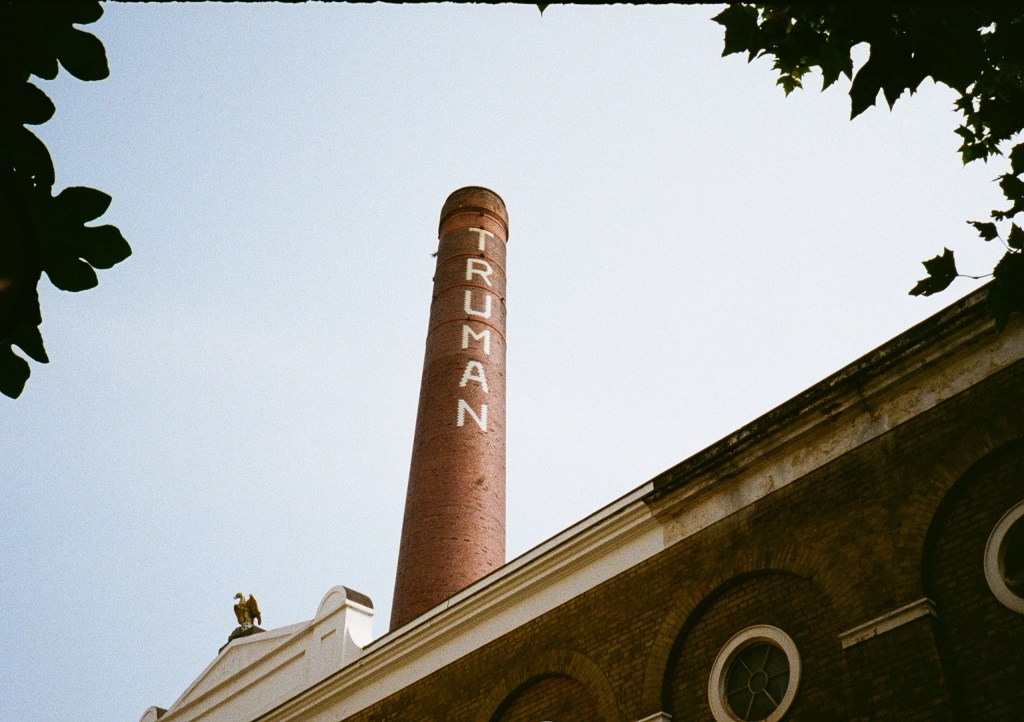
The choice of film ISO will also determine aperture and shutter speed when shooting in Auto and Program modes. The lens adjusts between f/3.5 to f/16 and shutter speeds of 1/350 to 4 seconds but shows no indication of which shutter speed or aperture are used. It also automatically changes with different focus zones to maximise the depth of field possible to keep everything sharp. The regular P mode is great for everyday shooting.
I did have some difficulty with the Focus Zones, as you need to determine the rough distance to the subject, set the camera to the respective zone and pretty much hope for the best as you cannot see the focus change through the viewfinder. This was most obvious when using the close-up zones for subjects like flowers, food etc, but found the wider focus options fared much better.
Even though you can see the focus zones through the viewfinder, in the moment of taking the photo it’s also easy enough to forget to change your focus zone – which of course led to some images that may as well be binned. So, generally this is a big part of the camera that reduces the quality of the user experience for me, I would much prefer a more precise fully manual focusing system. The viewfinder though is bright and easy to see through, once you’ve got used to the framing lines through the viewfinder and ensuring your composition is within them, the results are accurate.
Verdict
In the rise in popularity of film photography, Pentax knew exactly what they were doing releasing a brand-new camera, and a compact half-frame one at that. I love using half frame for both efficiency and saving money on film, but I can see as well how shooting in vertical by default is likely to suit the target audience for this camera – transitioning smartphone users and the younger demographic sharing to social media.
Its ease of use and automated settings will likely be a big selling point for many people. As well as the snappers transitioning and using film for the fun and look of it, this camera is likely to suit many street photographers too.
The focus zones took a bit of getting used to and I found the close-up zones in particular relatively difficult to get right; perhaps with unlimited time and film to play with the camera, this is something that can be mastered.
The viewfinder is bright, image quality is consistent with colour and contrasts captured well, and the settings adjusting to changing brightness.
Controls and buttons give it a classic feel, but for me I like more control over aperture and shutter speeds. For anyone that wants a good camera with the minimal effort required for a good shot, and the opportunity to use flash and other modes when they see fit, this is a good option and probably well suited for them.
£499.99 is still a rather hefty sum for the Pentax 17. It is more expensive than it should be given the build quality, its toy-like design and the expectations I had. But still, a solid effort.



